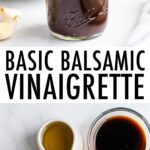[ad_1]
This easy balsamic vinaigrette combines balsamic vinegar, olive oil and a few seasonings to create a tasty salad dressing. It’s flavorful, balanced and pairs well with a variety of salads.
Balsamic vinaigrette was one of the first homemade dressings I ever learned to make and it’s still a staple in our kitchen.
Over the years I’ve perfected my go-to balsamic vinaigrette recipe to create a version with the optimal amount of vinegar, oil and seasonings. It has just the right amount of tang and sweetness and it’s seriously so delicious… you’ll want to drizzle it on everything!
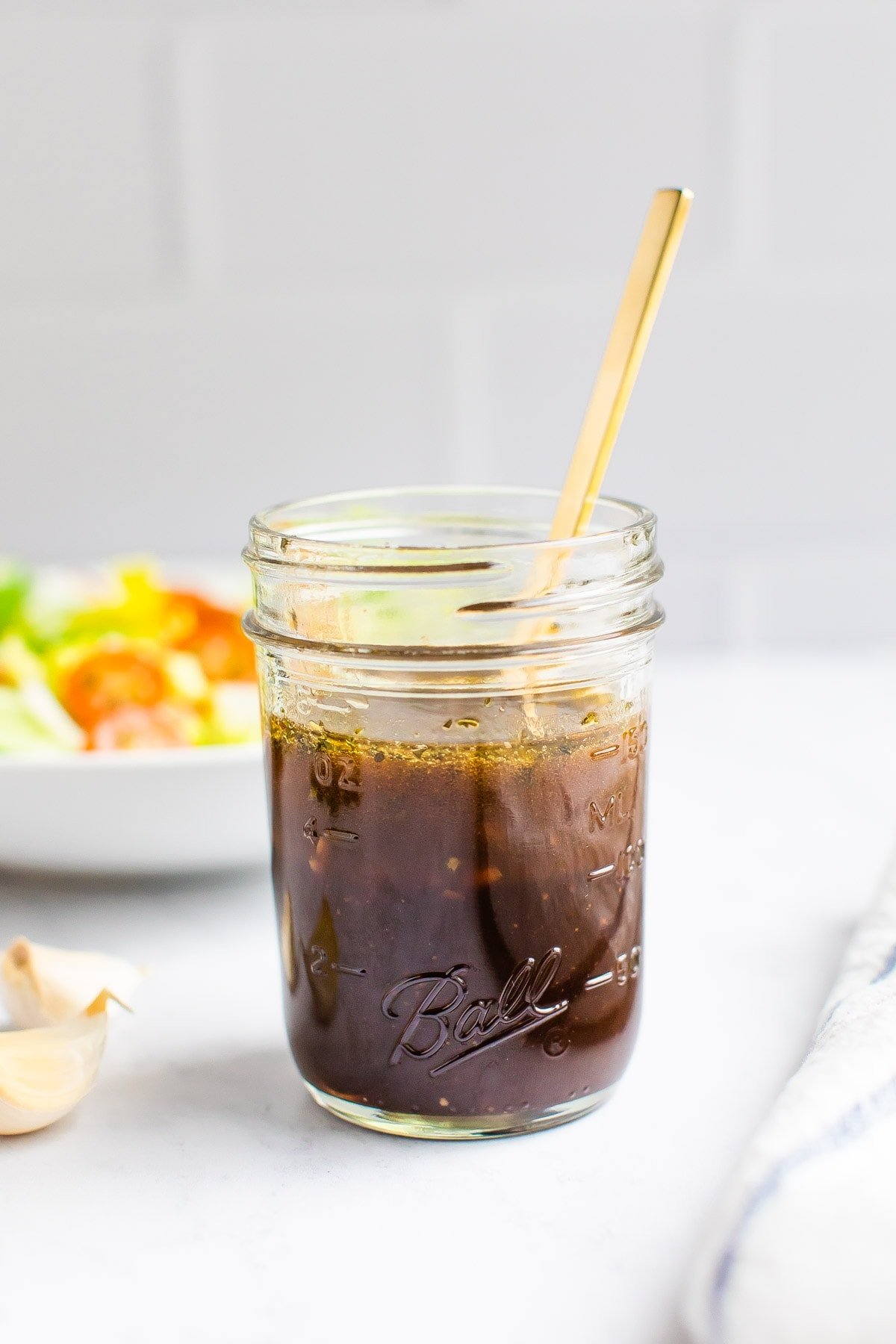
Balsamic Vinegar vs. Balsamic Vinaigrette
These two things sound super similar so it’s easy to get confused! Balsamic vinegar is just vinegar (grape must), whereas a balsamic vinaigrette is made by combining balsamic vinegar with oil, sugar and other seasonings.
In general, if you’re looking for a super healthy option for salad dressing, you can stick to just oil and vinegar, which won’t have any added sugar or salt!
Is Balsamic Vinaigrette Healthy?
Vinaigrettes are the healthier salad dressing options, especially when compared to creamy dressings. And the primary ingredients in balsamic vinaigrette are balsamic vinegar and extra virgin olive oil, both of which have awesome health benefits.
Of course, homemade balsamic vinaigrettes tend to be healthier than packaged store-bought vinaigrettes, which have added preservatives, artificial flavorings, sugar and cheap oils.
The recipe I’m sharing here has a higher ratio of vinegar to oil. The typical ratio is 1 part vinegar to 3 parts oil, but I like a more tangy dressing and use 2 parts vinegar to 1 part oil! This saves on calories and fat as well.
What Type of Balsamic Vinegar Do You Use for Salad Dressing?
In terms of what type of balsamic vinegar to use for making balsamic vinaigrette, I personally like balsamic vinegar from Modena. Right now I’m loving this Cucina & Amor Balsamic Vinegar of Modena or the Trader Joe’s Balsamic Vinegar. Both are a great value!
You can also use white balsamic vinegar to make a white balsamic vinaigrette.
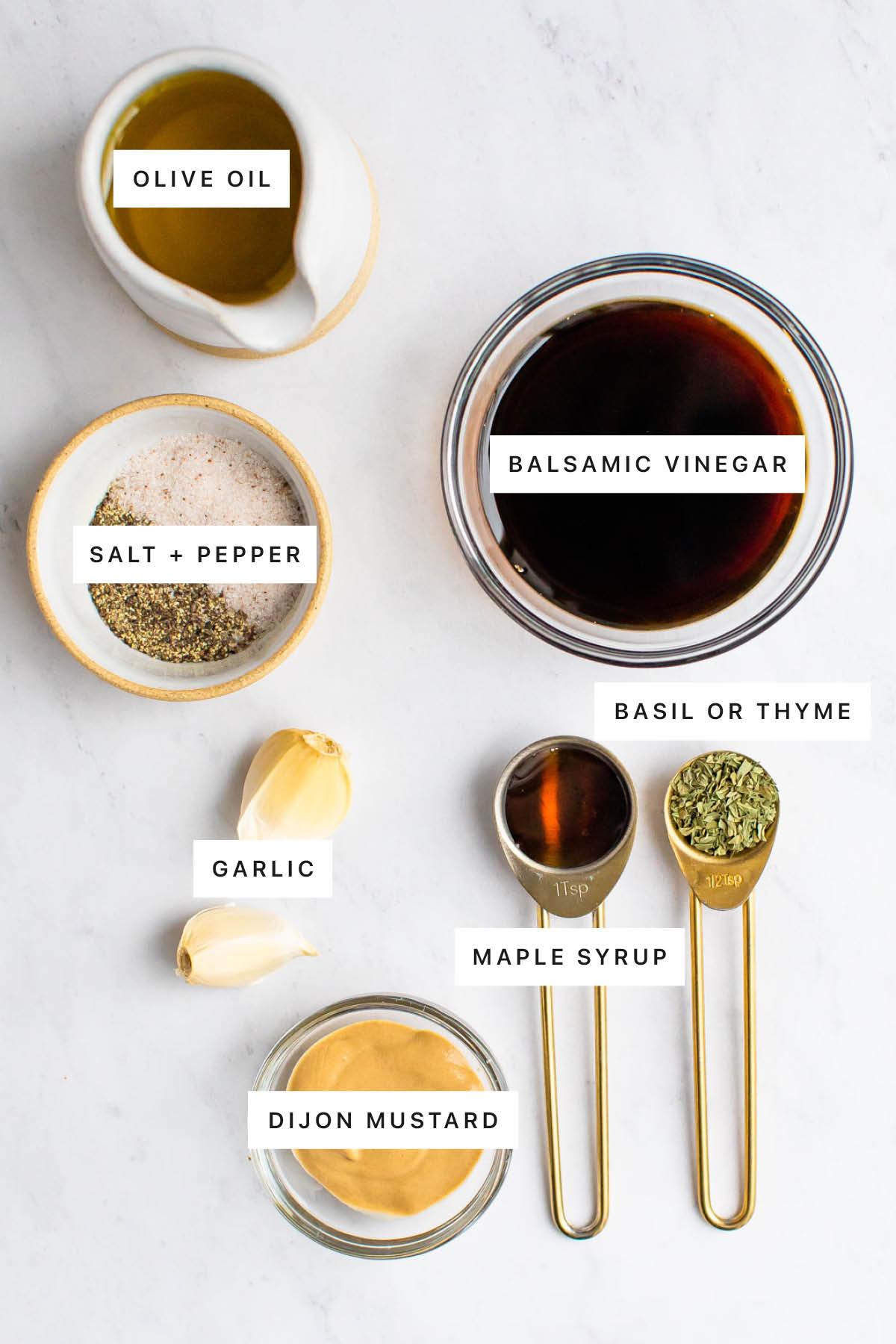
Ingredients Needed
This dressing is simple to make with just a few pantry staples. Here’s what you need:
- balsamic vinegar – feel free to use regular or aged balsamic, but go for one that is high-quality (aka not the cheapest bottle on the shelf). Spending a little more is worth it when it comes to balsamic vinegar, especially when it’s the star of the show like it is when making balsamic vinaigrette. See my picks above!
- extra virgin olive oil – I recommend using a higher quality extra virgin olive oil for salad dressings like this. Save your regular olive oil for cooking.
- maple syrup – this is what makes this salad dressing in my opinion. The extra hint of sweetness really ties the dressing together and gives it the perfect balance. Honey or agave would work if you don’t have maple syrup on hand.
- dijon mustard – it might seem like you can skip this ingredient but don’t! It adds flavor and helps to emulsify the dressing.
- garlic – I love the flavor of fresh garlic in salad dressings, especially balsamic vinaigrette!
- sea salt – a little salt balances the dressing and brings out the flavor from all the other ingredients.
- dried basil and/or thyme – these dried herbs are totally optional, but I like adding them in for extra flavor!
Do you Whisk or Blend Balsamic Vinaigrette?
There’s no wrong choice here! Whisking or blending is up to your personal preference. Oftentimes, I will just whisk or shake this balsamic vinaigrette in a mason jar because it’s easy and requires fewer steps (and dishes), but if you’re looking for an emulsified dressing that’s creamy without chunks of fresh garlic, I recommend blending it up!
And if you want a really creamy version, try my creamy balsamic vinaigrette with Greek yogurt!
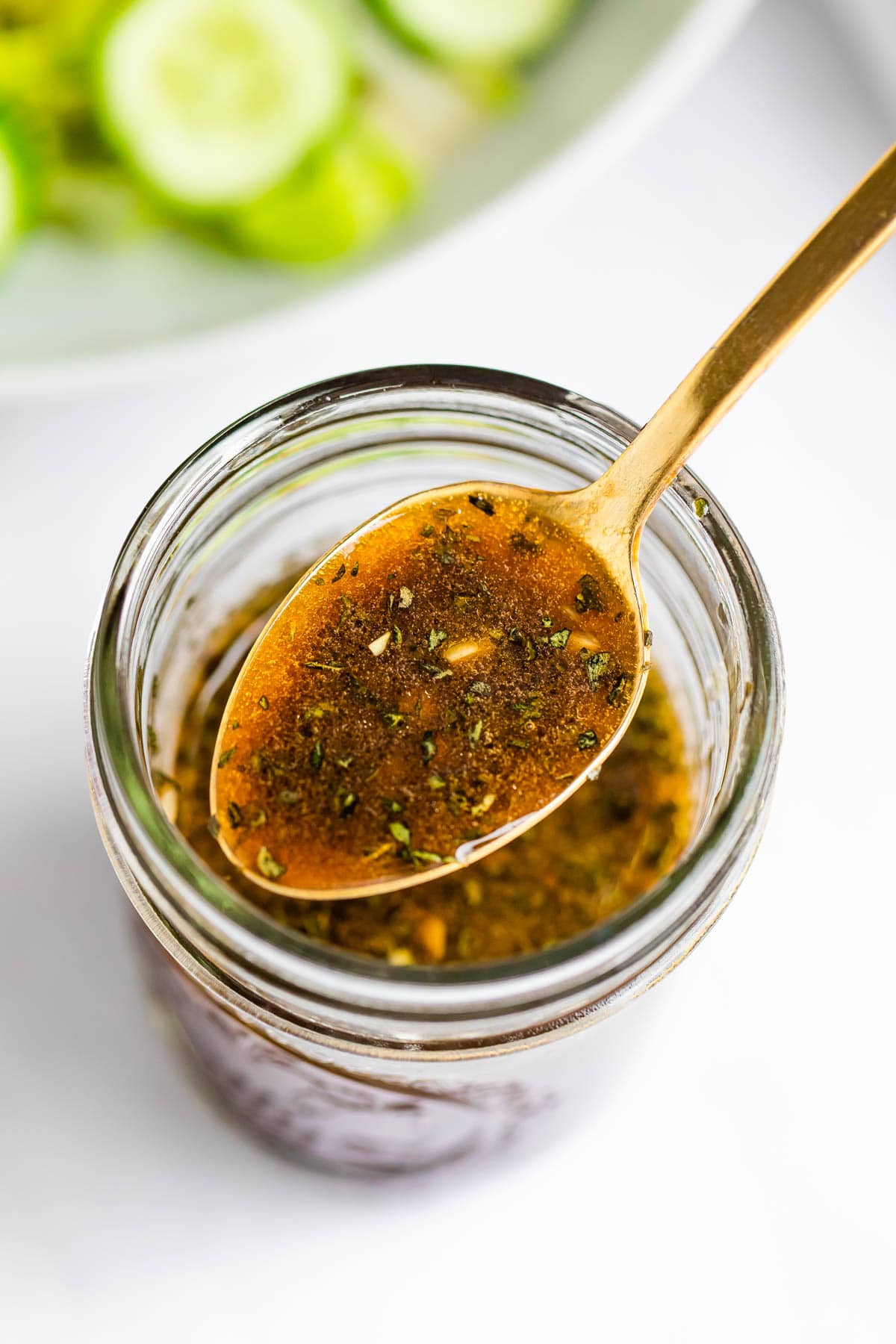
How to Use Balsamic Dressing
Balsamic dressing is such a powerhouse and works on just about any type of salad in my opinion. Some of my favorite salads to top with balsamic vinaigrette include caprese pasta salad, roasted tomato salad, spinach salad. And here are some other ideas for how to use it:
- You can use it to jazz up a basic green salad, pasta salad or my favorite… drizzle it over caprese salad.
- As a marinade for protein like chicken, salmon or steak. I highly recommend my balsamic salmon!
- Add it as a dressing to wraps.
- Drizzle a little on pizza after cooking.
- Coat roasted vegetables with a splash of balsamic dressing.
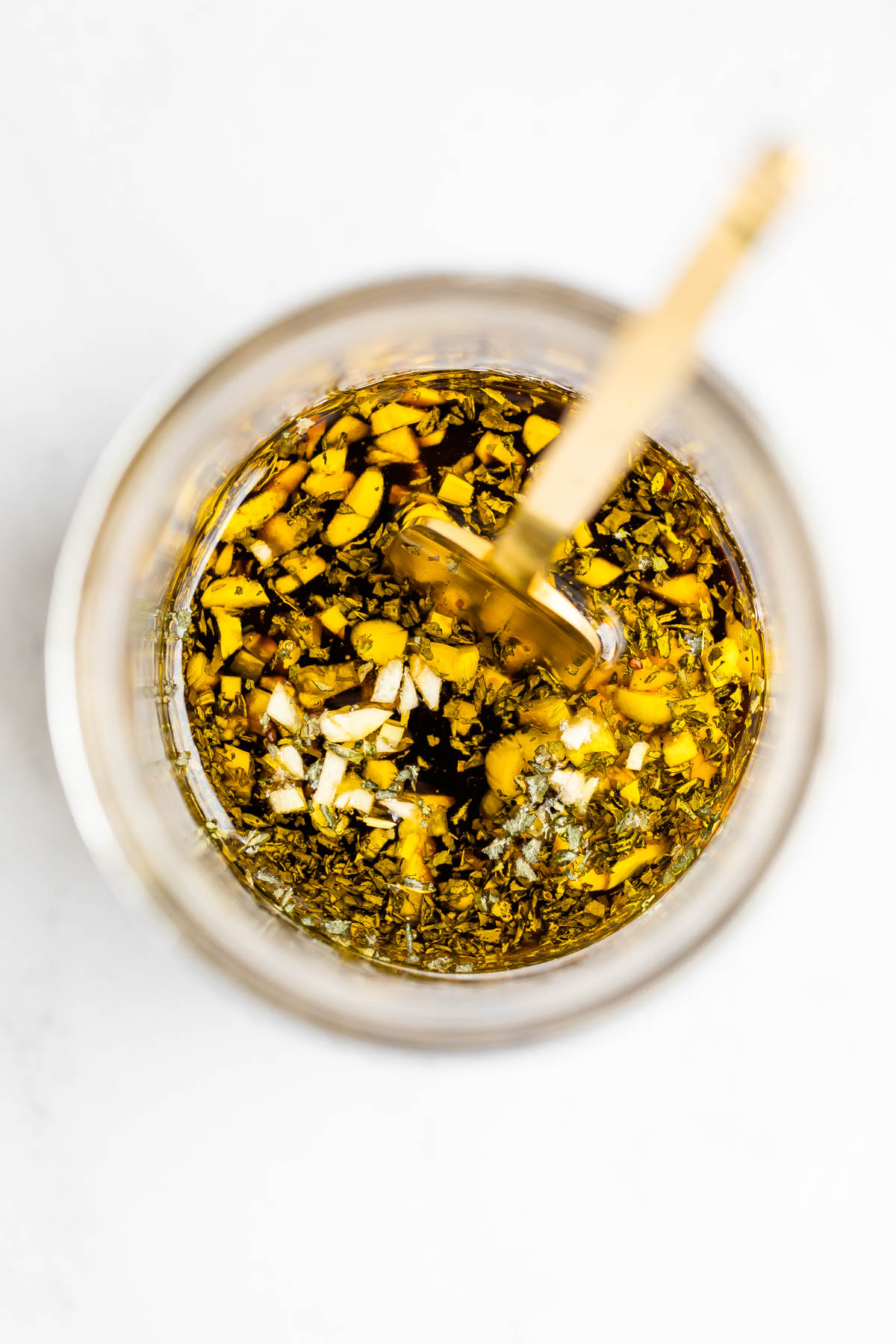
How to Store Balsamic Vinaigrette
I like to mix my balsamic vinaigrette in a mason jar, which is easy for shaking and storing! In general though, you want to store homemade dressings in an airtight container with a lid in the refrigerator. This balsamic vinaigrette should last for up to a week in the fridge.
I use these 8 oz mason jars and plastic lids.
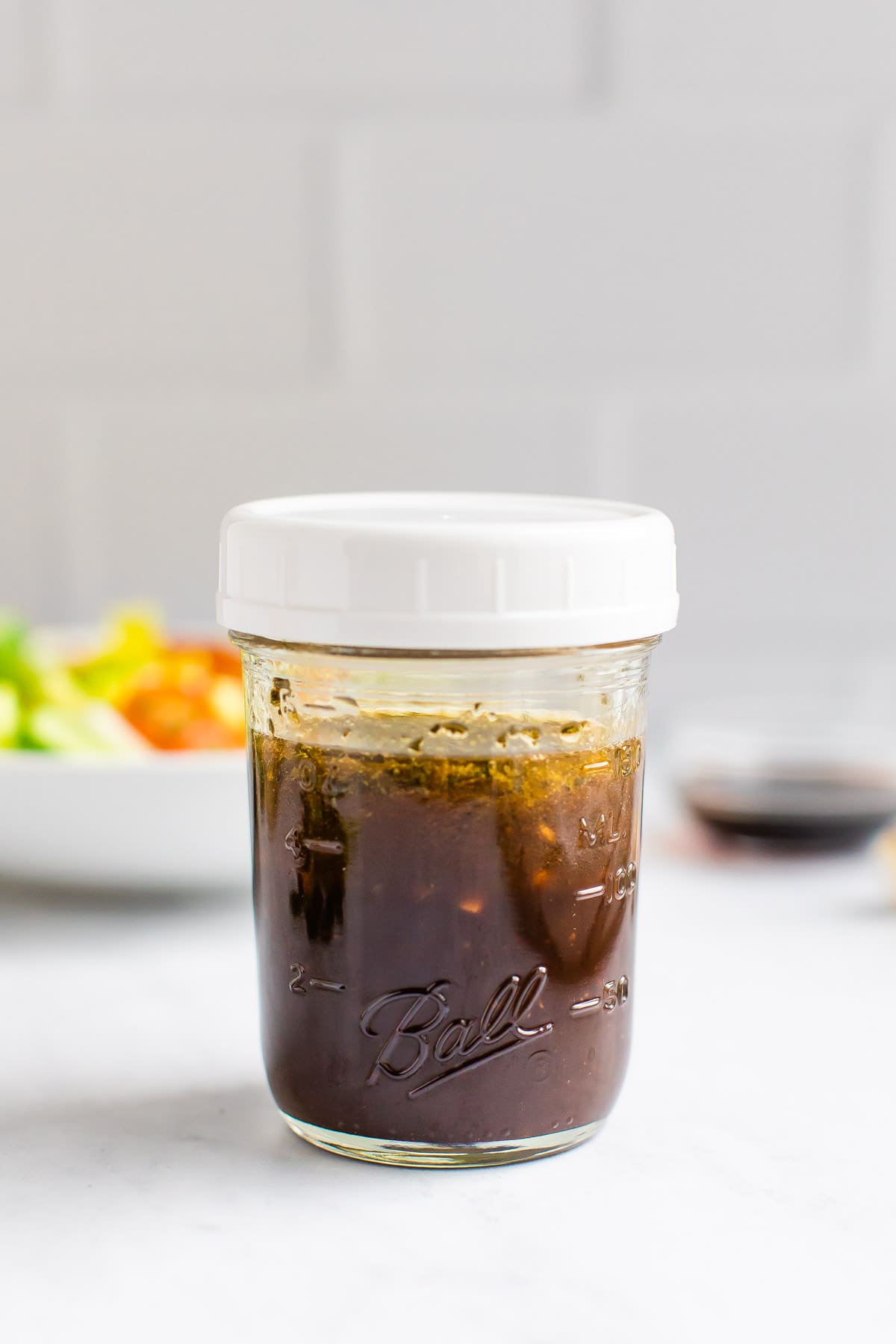
More Healthy Salad Dressing Recipes
Be sure to check out all of my salad dressing recipes on EBF! No time to make your own dressing? Check out my favorite healthy store-bought salad dressings.
-
Add all ingredients into a blender and blend until combined or alternatively you can add all the ingredients into a mason jar and shake or whisk until emulsified.
-
Store the vinaigrette in an airtight container in the fridge for up to 1 week. If the olive oil becomes solid (this is normal), simply let the dressing sit out on the counter for 10-15 minutes and then whisk or shake to combine and serve. Recipe makes about 3/4 cup.
Serving: 2Tablespoons | Calories: 100kcal | Carbohydrates: 4g | Fat: 9g | Saturated Fat: 1g | Polyunsaturated Fat: 8g | Sodium: 217mg | Sugar: 3g
Nutrition information is automatically calculated, so should only be used as an approximation.
[ad_2]
Source link



